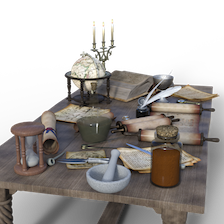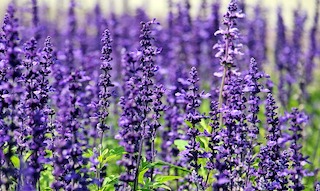



|
|
|
|
|
|
|
|
|
|
|
|
|
|
|
|
|
|
|
|
|
|
|
|
|
|
 After the fall of the Roman Empire, Europe was plunged backwards into the Dark Ages. Many physicians and other learned people relocated to Constantinople in the Byzantine Empire (Istanbul, Turkey, today), taking along all their knowledge. The works of Hippocrates, Dioscorides, and others were translated and widely distributed in the Middle East. Experimentation with plants continued and the tenth-century physician Avicenna extracted plant essence, producing otto (or attar), the oil of flowers—in this case, roses.
After the fall of the Roman Empire, Europe was plunged backwards into the Dark Ages. Many physicians and other learned people relocated to Constantinople in the Byzantine Empire (Istanbul, Turkey, today), taking along all their knowledge. The works of Hippocrates, Dioscorides, and others were translated and widely distributed in the Middle East. Experimentation with plants continued and the tenth-century physician Avicenna extracted plant essence, producing otto (or attar), the oil of flowers—in this case, roses.
Elsewhere in the world, the aboriginal people of Australia closely integrated their culture with their medicine and developed a sophisticated understanding of native plants. Their eucalyptus and tea-tree remedies are now used worldwide. In South and Central America the ancient Maya, Inca, and Aztec had herbal traditions that were intertwined with religious rites. Some of the practices from the Aztec, Mayan, and Spanish cultures evolved into modern Mexican herbal medicine. North of the Rio Grande, plants were also employed for both healing and ritual by Native American tribes. European settlers in the New World adapted some of these herbal practices into theirs. African slaves brought their herbal and religious traditions, adding to the blend.
By the mid-sixteenth century, European culture recovered. Experimenting with local plants, Europeans began distilling lavender, rosemary, and sage oils. While essential-oil blends were popular for masking body odor, they were also used medicinally. Juniper, Laurel, and pine were widely used for combating illness, including the plague. In England, physician and master herbalist Nicholas Culpeper (1616–1654) published his great herbal treatise The English Physitian. An edition of this book was the first herbal published in the American colonies in 1700.

With the professionalization of medicine, the use of herbs and perfumery were crushed again. Universities and the emerging medical establishment fought to take herbs out of the hands of the so-called uneducated. In the same time, the Christian church in their bid to control every aspect of people’s lives banned parishioners from personal adornment. As a result, the use of aromatics, even possessing oils and unguents, became a way to identify Witches, and culture again took a backward step. Under Great Britain’s King George III, who ruled from 1760 to 1820, a woman’s use of scents or potions was equated with seduction and betrayal, and was met with “the same penalties in force against Witchcraft.
Eventually, herbal practices and perfumery made a comeback as attitudes shifted, but by the mid-nineteenth century, essential oils were being replaced by chemicals in medicine.Ironically, a French chemist, Rene-Maurice Gattefosse, was responsible for resurrecting the use of essential oils during the 1920s. After burning his hand in his laboratory, he grabbed the nearest bottle of liquid, which turned out to be lavender oil. Intrigued by the rapid healing effect of the oil, he devoted the remainder of his career to studying essential oils and named his discovery aromatherapy.
Shopping Basket
| Items: | 0 |
| Subtotal: | $0.00 |
Standard Shipping within the US on All Orders
- All Natural
- Hypoallergenic
- Use Essential Oils
- Effective
- Paraben Free
- Phthalate Free
- Alcohol Free
- Mineral Oil Free



